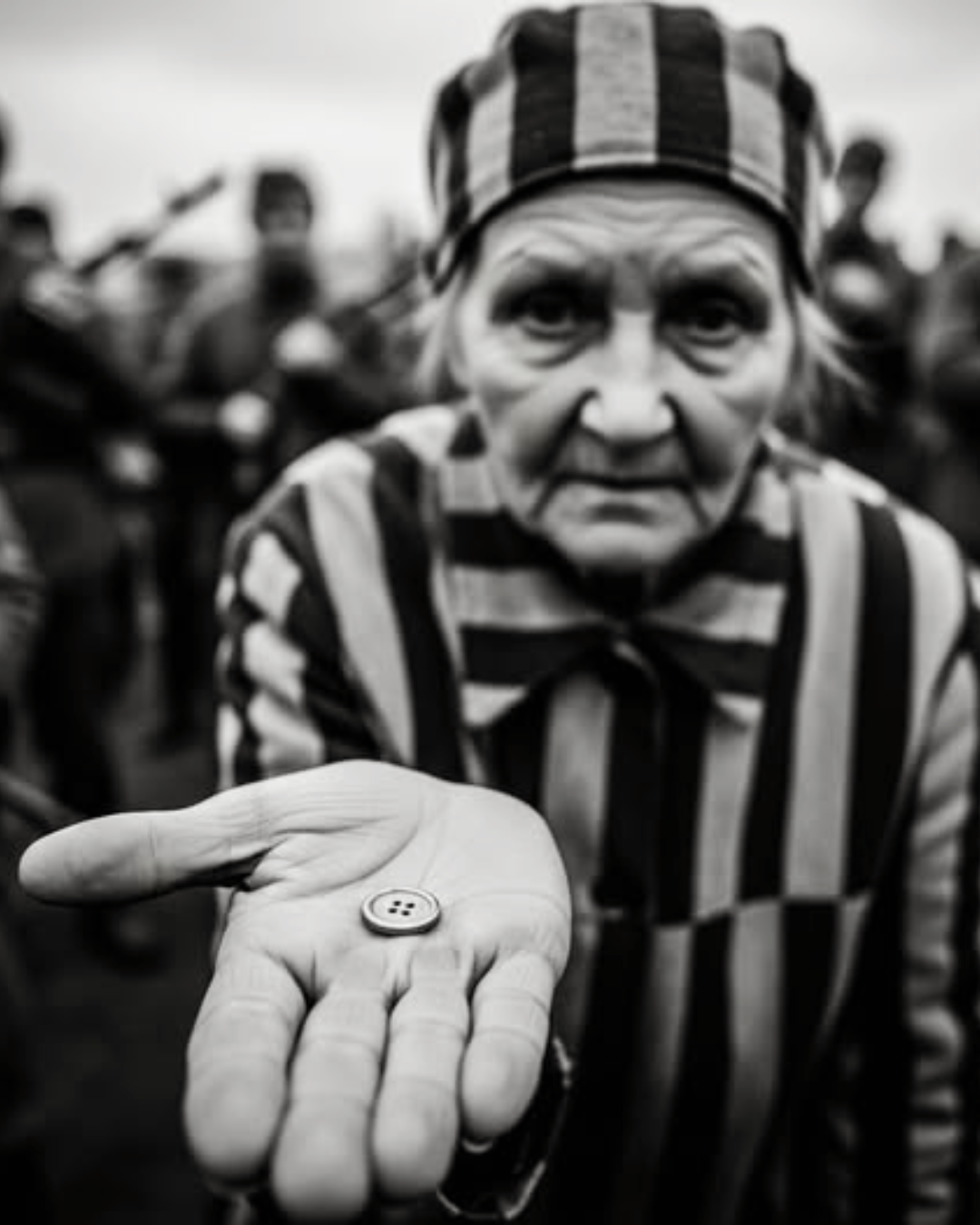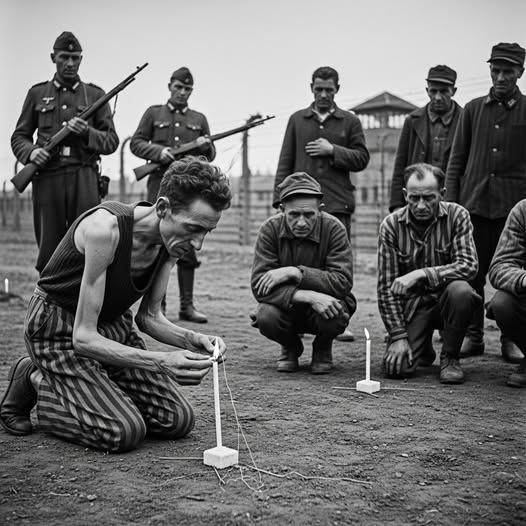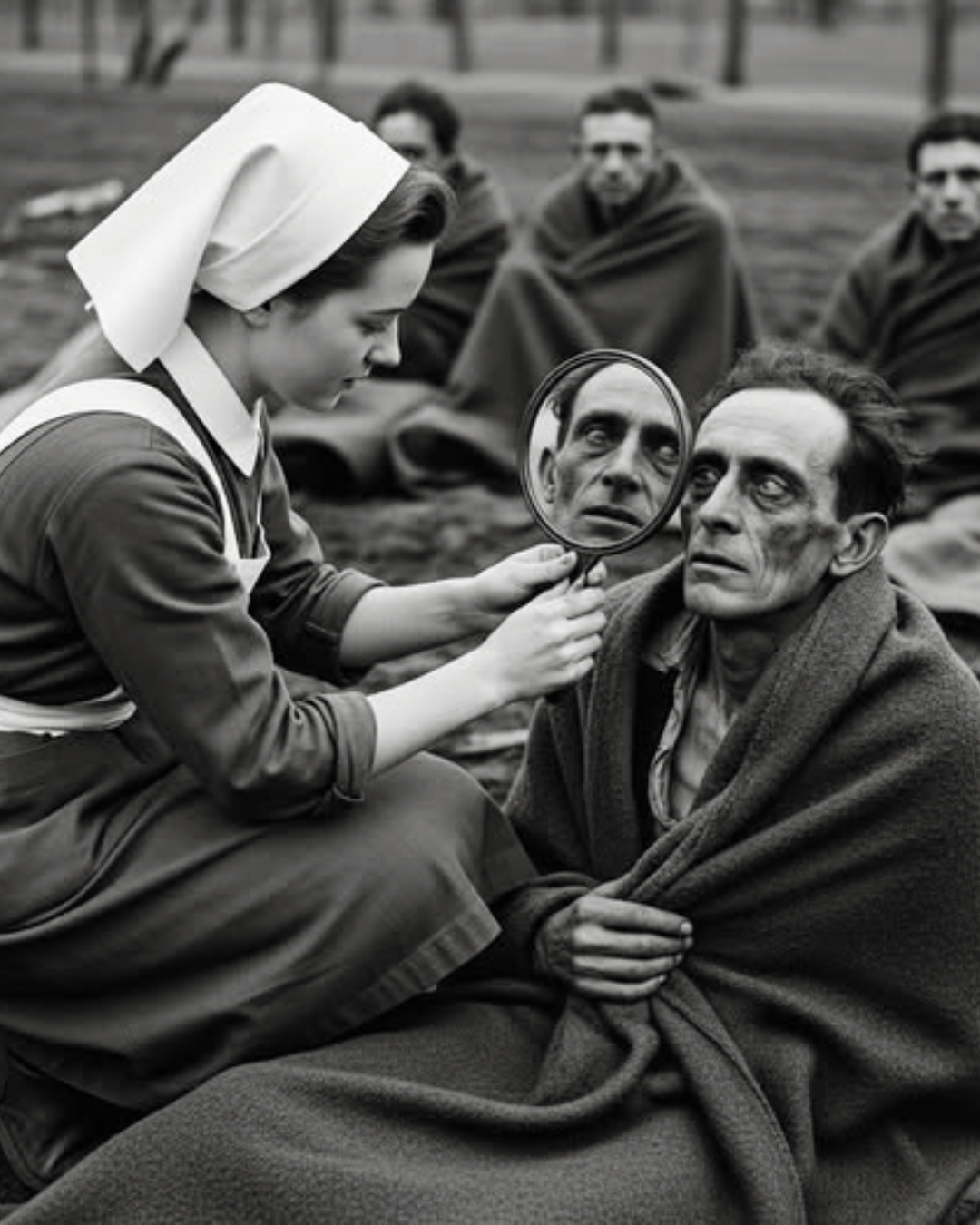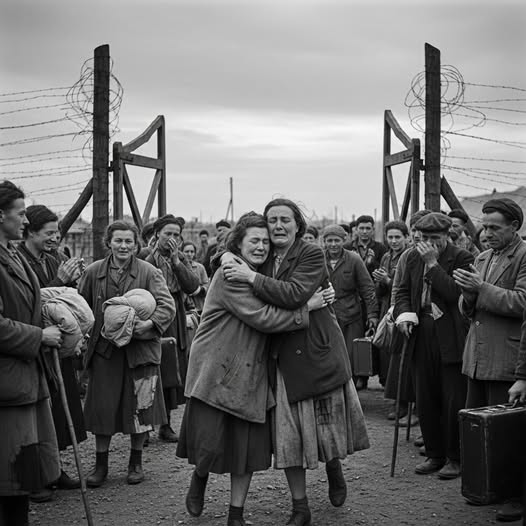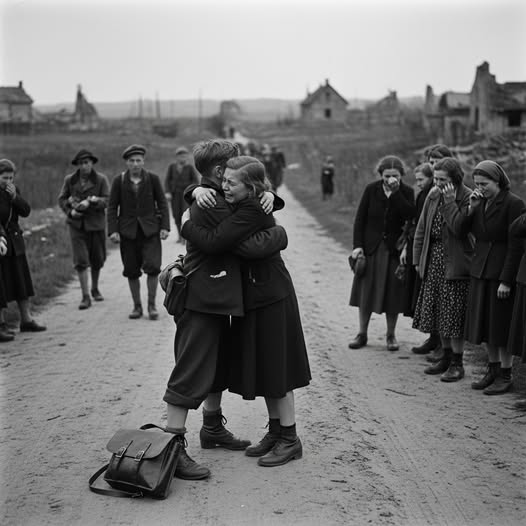The Silent Violin – Auschwitz, 1944

Under the gray skies of Auschwitz, where every breath seemed saturated with ash, silence was rarely complete. Distant screams, orders shouted in German, the sharp clatter of boots on gravel echoed like a daily funeral bell. But in the heart of this carefully orchestrated hell, a different music echoed, disjointed, painful, almost unreal. It was the orchestra of prisoners, forced to play to accompany the march of those marching to their deaths behind barbed wire.
Within this broken corpse, a man, a violinist with sunken cheeks, stroked the strings of his instrument. His fingers trembled with both hunger and fear, but the music continued. Each note, fragile and trembling, carried the weight of unbearable pain. The violin, an object of beauty in another life, became a weapon in the hands of the executioners: a psychological weapon, designed to mock those who approached the gas chambers, to deprive them of their final moment of silence, dignity, and contemplation.
Yet behind the bow gliding across the strings lay something more than compulsion. Each melody became a silent prayer, an improvised requiem for those lives doomed to destruction. The violinist wept without tears, for the tears had long since fallen from his eyes, seared by fatigue. His sobs were hidden in the vibrations of the wood, in those trembling sounds that, for a moment, seemed to transform the stale air of the camp into an invisible shroud.
The Auschwitz orchestra was not an orchestra of joy. It was a macabre irony, born of the Nazis’ desire to impose discipline through humiliation. Musicians were forced to play at dawn, as the labor commandos marched in columns, and again at dusk, when they returned exhausted, broken, sometimes in smaller numbers than when they left. Violins, cellos, and flutes created a veil of sound intended to drown out the din of suffering, to give the horror a veneer of normalcy.

And yet, despite its limitations, despite its absurdity, something human remained in this music. Every note, even when forcibly wrenched, carried a truth stronger than the Nazi lie. The violinist knew he was playing for those who would never hear music again. He knew his melodies accompanied the footsteps of the condemned, that each arpeggio became a final, sonic caress for beings who would never be buried. And in this unbearable paradox, he saw a form of resistance.
With his instrument, he continually affirmed his humanity. For if his executioners had sought to turn him into a simple tool, a docile cog in the machinery of death, he transformed his role into testimony. His pain became universal, and his notes a memory for the future. Survivors recounted that sometimes, amidst the chaos, these moments of imposed music paradoxically became an inner truce. Prisoners closed their eyes, recalling the world of years past: a concert in a lighted hall, a village festival, a song hummed by their mother on the edge of their bed. Music, even distorted, reminded us that man can create, not just destroy.
It is said that this violinist, whose name has been erased from the records or lost among the millions who have disappeared, constantly repeated to his companions, “As long as I play, I live. As long as I play, I am not just a number.” In the biting cold, his chapped hands clung to the wood of his violin like buoys on the open sea. There was no longer a written score: only a series of inner melodies, memories of Bach or Schubert, interwoven with the cries of the present.
In Auschwitz, every symbol of life became fragile, yet essential. The silent violin—for it could neither truly soothe nor save—was, nevertheless, a cry of resistance. In this death camp, where humanity was trampled, the simple act of rubbing the bow against the strings became an act of spiritual survival.
One day, when the orchestra had to play while a column of men marched toward the crematoria, the violinist, on the verge of collapse, closed his eyes. His fingers, almost mechanical, continued their dance, but his mind wandered elsewhere. He thought of his loved ones, of the home he would never see again, of beloved faces. Each note he uttered was a farewell, an invisible stele of sound.
And then silence fell. A silence more deafening than any military march. The violin fell silent one day when its owner also vanished into the abyss. But its instrument, discovered after the war, still bore traces of that history: wood worn by fingers, strings soaked with dried tears. This violin, now on display in some museums, tells without words what words cannot: pain, dignity, memory.
Today, when we speak the name Auschwitz, the echo of the silent violin still resonates. It reminds us that music, even distorted, retains a fragment of light. That even a bound person can breathe humanity through a gesture, a note, a breath. And that amidst the absolute horror, there are always fragments of resistance, sparks of memory that no torturer can extinguish.
The violins of Auschwitz will never again accompany death. From now on, they play for the living, for generations that refuse to forget. Every vibration, every chord, every prolonged silence is a call to remember, to reject indifference, to ensure that history never repeats itself.
Note: Some content was generated using AI tools (ChatGPT) and edited by the author for creativity and suitability for historical illustration purposes.

